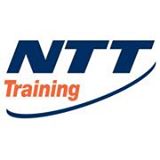|
||||||||||||||||||
Bring this seminar on-site to your facility for groups of 10 or more. |
Learn the basic hydraulic components, how they work, and their function in a hydraulic circuit. You will be able to understand and interpret hydraulic schematics, and implement safe work practices.
Course Description
Learn the basic hydraulic components, how they work, and their function in a hydraulic circuit. You will be able to understand and interpret hydraulic schematics, and implement safe work practices.
The extreme flexibility of hydraulic elements can create a number of problems. Participants learn how fluids must be positively confined through the entire system and prevented from going anywhere except where we want them to go.
There is no magical way to troubleshoot a hydraulic system; it is the logical analysis of basic facts and principles. Through the hands-on hydraulic trainers you will construct, operate and troubleshoot systems using common hydraulic components.
Client favorite related courses and combinations:
- Vibration Analysis
- Precision Shaft Alignment
- Bearings & Lubrication
- Centrifugal Pumps
- PLCs
- ControlLogix
- VFDs
- HVAC
2012 NFPA 70E? - Arc Flash Electrical Safety / Look at what they are saying...
"Excellent trainer aids."
- Paul McLaughlin MWRD
"The instructor did an incredible job. He knew much about history of
devices not otherwise listed in text. The pace was fast enough to keep
subject interesting, however slow enough to provide understanding."
- Scott Helbing
Who Should Attend
This is a basic course, without any prerequisites, that helps you develop a solid foundation to build your troubleshooting knowledge and skills. So don?t worry if you?ll benefit from this class, because we?ve taught people at all skill levels and different backgrounds.
People who will benefit from attending this course include:
- Mechanics
- Maintenance Technicians
- Energy management personnel
- Plant & facility maintenance technicians
- Building engineers
- Building managers & superintendents
- Plant & facility managers
- Stationary engineers
- Owners & managers
- Anyone who needs cross-training on Fluid Power & Hydraulic Systems
What You'll Learn
In this course you will learn how to:
- Troubleshoot a lack of pressure in the system
- Diagnose why there is not any fluid in the system
- Use measurement instruments detects true cavitations
- Find the cause of a frequently blown shaft seal on a hydraulic pump
- Discover the sources of excessively high fluid temperature
- Find the cause of excessive high fluid pressures
Course Agenda
Principles and Laws
- Force, flow and pressure
- Work and power
- Pascal?s law
- Pressure/flow relationships
- Pressure/force relationships
- Pumps
- Positive displacement only: gear, vane, piston
- Operation principles
- Efficiencies comparison
- Pressure compensation
Hydraulic Motors
- Three major types
- Principles of operation
- Basic circuit considerations
Cylinders
- Types of construction
- Seals
- Design considerations
- Regeneration
- Cushions
- Sizing of cylinders
- Troubleshooting
Fluids
- Types/characteristics
- Filtration
- Cavitation
- Fluid analysis
Auxiliary Devices
- Accumulators
- Heat exchangers
- Reservoirs
Flow Controls
- Nonpressure compensated
- Pressure compensated
- Flow control placement
- Temperature compensated
- Pressure intensification
Typical Circuits
- Pressure Controls
- Relief valves: simple and compound
- Sequence valves
- Pressure reducing valves
- Unloading valves
- Counterbalance valves
- Principles of operation
- Symbols
- Directional Controls
- 2-way, 3-way and 4-way valves
- Manual, solenoid and pilot operation
- Open, closed and other center conditions
- Internal and external pilot
- Valve terminology and symbols
Transmission Lines and Fittings
- Velocity and sizing
- Pipe, tubing and hose
Basic Circuits
- Open vs. closed center
- Series/parallel
- Unloading/sequencing
- Load sensing
- Troubleshooting and basic practices
- Failure symptoms
|
More Seminar Information | ||||||||||
| ||||||||||
 Search similar training
Search similar training Email this page
Email this page Print this document
Print this document
|
Frequently Asked Payment Options Register Availability Other Information |

 Hydraulics: 2-day Classroom Seminar
Hydraulics: 2-day Classroom Seminar
 On-Site Training
On-Site Training